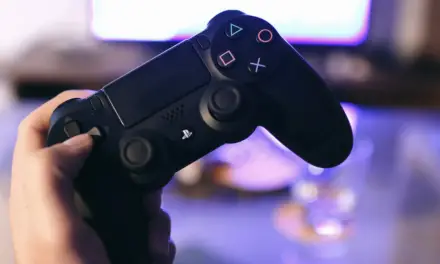When it comes to PC gaming, especially anything fiercely competitive, gamers are always looking for something to give them an edge. It doesn’t matter how slight that edge is. An edge is an edge, after all.
One of the latest curiosities floating around the web is whether or not USB 3.0 provides more speed with a gaming mouse. A solid gaming mouse is already crucial in online competitive gaming and USB 3.0 makes sense.
The transfer speed with USB 3.0 is 5Gbps, much faster than USB 2.0, so it makes sense to associate a gaming mouse and higher speeds with the latest USB port technology.
Table of Contents
Does a Gaming Mouse Need USB 3.0?

There is no noticeable speed difference between USB 2.0 and USB 3.0 when it comes to using a gaming mouse. A gaming mouse is a slow device in terms of data transfer so USB 2.0 is more than fast enough.
Also, if your mouse is not USB 3.0 compatible, there will be zero benefits to plugging into a USB 3.0 port and it will just operate as a USB 1.1 or 2.0 mouse, whichever it was designed to be compatible with.
Communication latency between your movements and what’s going on in-game also won’t be an issue because any generation of USB device will respond far faster than your reflexes.
In fact, you may be better off sticking with USB 2.0 because it is better supported and often works better. USB 3.0 drivers can sometimes be buggy while USB 2.0 will almost always work seamlessly.
The speed of a mouse is based on its “polling rate.” A standard USB 2.0 usually has a default polling rate of 125Hz. A gaming mouse has a much faster polling rate, between 800Hz and 1,000Hz. All that means is a gaming mouse sends data at a rate of 800 to 1,000 times per second.
Even at 3.0, it’s still defaulting at 125Hz and, although you may be able to raise it, there is nothing that will make the gaming mouse’s ability to send data any faster or give you more of an edge with USB 3.0.
What is USB 3.0?
USB stands for Universal Serial Bus, regardless of the number that follows it. There are different ports, including the standard USB ports you often find on computers and laptops, along with the newer USB-C ports, which are predominantly located on smartphones and charging devices.
Related Article: Is A Mouse Bungee Worth It? (And How To Choose A Good One)
All a USB port and cable are for is data transfer and charging. As the USB numbers go up, it’s an indication of improving technology and faster data transfer rates.
Since a gaming mouse has a maximum limitation on its data transfer rate (that isn’t even close to the data transfer rates available), the technology of the USB port is negligible. A mouse almost always connects to the older style, rectangular port, with nine pins.
What’s the Point of USB 3.0?
More data transfer speed at lower power levels. That’s it. Until gaming mice are designed to somehow take advantage of the data transfer speed, the fact that it’s USB 3.0 or USB1.0 doesn’t matter in the larger scheme.
In fact, the vast majority of competitive gamers still use USB 2.0 because they understand that there is no inherent advantage to embracing USB 3.0.
USB 3.0 Isn’t Even USB 3.0
Apparently, USB 3.0 was dead on arrival almost as soon as it came out. The reality is, USB 3.1 Generation 1 is the new standard but there is also USB 3.1 Generation 2, which has a data transfer rate of 10Gbps.
Apparently, the powers that be thought it would be too confusing to call it anything other than USB 3.0 so that’s what we have. Does it improve a gaming mouse any more than the seemingly non-existent 3.0? No, not really.
The way a mouse works, even when they release USB 4.0 (it’s already in the works), there won’t be a difference in the speed capabilities of the gaming mouse.
Bottom Line
Due to the speed limitations of a gaming mouse, the transfer rate of USB 3.0 doesn’t make any difference in gaming capabilities. Gaming mice have higher polling rates than standard mice but it doesn’t translate to an improvement in gaming capabilities.



